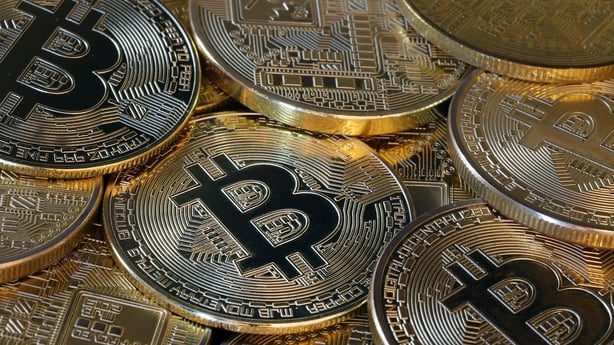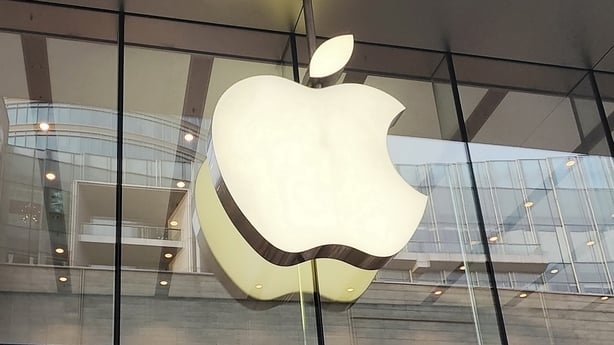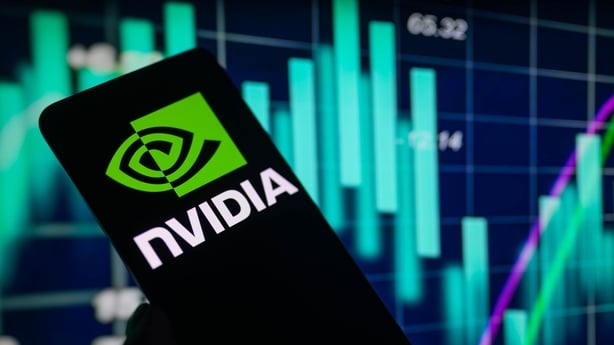Bitcoin is having a bit of a moment right now.
On the 5th of November it was trading at around $68,300.
On Friday it broke the $100,000 threshold for the first time – representing a more-than 40% rise in one month.
The price has eased back slightly since then – but it's still trading at prices that have never been seen before, even during the cryptocurrency’s previous boom times.
And while there are multiple factors behind its buoyant performance, the main driver of late is undoubtedly political.
That’s because the crypto community was one of the demographics that Donald Trump targeted during his campaign – with big promises about what he would do for the sector.
Addressing the annual Bitcoin Conference in Tennessee earlier this year, Trump made very clear to them that he was going to be much more favourable to crypto currencies than the Biden administration had been (and the Harris administration would be).
That includes a pledge to fire Gary Gensler on his first day in office – a promise that was met with rapturous cheers from the crypto crowd.
Who is Gary Gensler?
We need your consent to load this rte-player contentWe use rte-player to manage extra content that can set cookies on your device and collect data about your activity. Please review their details and accept them to load the content.Manage Preferences
Gensler is the now outgoing head of the Securities and Exchange Commission in the US – which is the body that regulates stocks and shares.
Over the past few years he has made himself an enemy of the crypto fraternity, because he’s taken a hard line on businesses operating in the space. A few months ago he said that the industry was "rife with fraud and hucksters and grifters".
Last year he brought 46 crypto-related enforcement actions against firms – and the US government has ongoing cases against major trading platforms like Binance and Coinbase.
And central to the Biden administration’s approach has been to treat Bitcoin, and crypto in general, as a security – which is the same as the likes of stocks and shares.
With that comes a lot of regulatory oversight, and a lot of legal requirements around transparency - and the amount of information that is made available to customers.
That’s to ensure customers aren’t being duped by being told something is more valuable, or rarer than it really is. Or to reduce the risk that it’s a pyramid scheme, or subject to insider trading.
But crypto fans argue that it should actually be treated like a commodity – like gold or oil – which generally comes with far less regulation attached.
And Trump is going make that change for them?

That’s the belief – though really it may not matter all that much whether it’s treated now as a security or commodity. Cryptocurrencies are probably going to get a far easier time under Trump, no matter what.
Trump’s pick to replace Gelsner - Paul Atkins - is co-chair of the Chamber of Digital Commerce’s Token Alliance. That’s a lobby group that is calling for looser regulation on crypto.
And his rumoured pick for the Commodity Futures Trading Commission – which would oversee crypto if it is treated as a commodity – is Perianne Boring. She’s CEO of the Chamber of Digital Commerce, which promotes digital currencies like Bitcoin.
He’s also brought in investor and crypto advocate David Sacks as his crypto and AI czar – while his new confidante Elon Musk is also a major backer of crypto, including Dogecoin (which is why he was so keen to label is cost-cutting plan the 'Department of Government Efficiency’).
So the Trump administration looks like it will be loaded with fans of crypto – which has made the community very confident that they’re heading into a golden period.
Is this also why we’re seeing the rise of what are called memecoins?

Yes, there’s a kind of rising tide across the industry at the moment – so it’s not just bitcoin that’s benefitting.
Other established coins like Ethereum and Litecoin have been doing well in recent weeks – and we’ve also seen an explosion in memecoins as well.
These are essentially crypto denominations that are named after popular memes – which helps them stand out a bit, and allows people to buy in to show they’re in on the joke.
Dogecoin is maybe the earliest example of a memecoin – it’s been around since 2013.
But more recently we’ve had PNUT – named after the squirrel that became a martyr for the online American right after he was seized and put down by New York health officials.
There’s also MOO DENG, based on a pygmy hippo that’s become a popular joke online – and DogWifHat… which is based around a picture of a dog with a hat.
All of these seem a bit silly, but they do represent an interesting shift in how financial markets are working.
They revolve around someone creating these and essentially trying to make them go viral so that others can buy in. There’s no real fundamentals here, and the people that are buying them aren’t listening to financial experts of advisors – they’re following strangers online and often just buying in for a bit of a laugh.
Do they have any value?

That’s a very delicate question to ask when it comes to cryptocurrencies – and you could end up in a philosophical debate about whether traditional currencies – or even commodities like gold - have any real value.
But the reality is that cryptocurrencies have very few real world applications – there are a handful of places outside of the black market where you can buy or sell goods or services through the likes of bitcoin.
For most people it’s an asset to hold – or a bet that they’re making – rather than something with a tangible value or function.
And that’s especially true for the countless fringe and memecoins that have cropped up in recent years, which don’t even have the widespread recognition and acceptance of bitcoin.
They are ultimately being created, bought and sold as a novelty. And even those trading in them probably recognise that – much like a meme – their value can be fleeting.
And the traditional financial sector is kind of scratching its head on this one - because it’s a dynamic that’s so far removed from what they would traditionally see.
But – of course – they’re also trying to figure out how it can get on board and make a profit from all of this too. That’s even led to custom software being created to try to track the chatter on social media to try to figure out what the next, hot memecoin will be.
Are they not taking a big risk by getting involved in this market?
You have to hope that these firms are being sensible in how they manage their investments – and only investing in crypto as part of a much broader investment strategy.
They would also, at the moment at least, be regulated themselves, and have requirements around how much money they hold as collateral.
But, yes, this absolutely is a risky market – and it’s far riskier than traditional investments for a range of reasons.
By design there is less transparency in crypto. It’s harder to know if the person who’s trying to convince you to invest is being upfront about their own exposure, and how they’ll benefit if you do.
But another core design of the likes of bitcoin is that there is no central authority – no central bank – that’s controlling the flow of the currency.
Bitcoin advocates see that as a plus because it means no government can move in and devalue the asset by printing more of them. But it also means that there’s no backstop there – no-one is going to come along and try to prop it up in the event of a crisis or collapse, like you might see if there was an issue with a country’s currency.
And while the $100,000 threshold was a new high, we have seen these kinds of booms in the value of bitcoin in the past, and they inevitably lead to a bust. Perhaps when a major player goes bankrupt or people just feel the market is overheated.
Bitcoin fans would say that the long-term trajectory is positive – and it is. But even accepting that, would-be investors need to be willing to lose big, they need to be in it for the long haul and they need to be brave in order to ride out the massive swings in value that the currency tends to experience.
Outside of crypto, Trump’s election seems to have been good for tech stocks in general…

Yes – most major tech companies have seen their share values rise in the past month.
And there is an overlap with what’s going on crypto, because there’s a feeling that Trump will be far more hands-off with regards to tech regulation than Biden was.
The Biden Administration actually took a relatively hard line on tech firms, and opened a number of cases against some big players.
There’s a case against Google that may see them being forced to break off some of their business, there’s a case against Apple relating to its iPhone, there’s a case against Meta over its ownership of Whatsapp and Instagram.
Until a few years ago these were the kinds of cases that only cropped up in the EU – and in fact it was something that Trump complained about in the past.
So the feeling is that he’ll take a much more lax approach to tech firms in how they do their business. Markets also expect he’ll be far less likely to get in the way of any big acquisitions or mergers that might crop up over the next four years.
But one stock that’s not doing so well lately is Nvidia – why is that?

This is the computer chip maker that was once a relatively small player on the scene, certainly compared to Intel, but is now the absolute dominant force in the market.
And it’s largely down to how its chips are being used in high end computing and servers for artificial intelligence applications.
And given the amount of hype around AI, and what it will be able to do, companies have been desperate to get their hands on Nvidia’s chips to help them grow rapidly.
In the past two years, Nvidia shares have risen by close to 900% – so if you were an investor back in 2022, you’re doing very well for yourself.
But the shares have floundered somewhat in the past month – they’re down about 2% since the start of November.
That’s not a huge drop – certainly not in the context of how much it’s risen in the past two years… but it is against the backdrop of those other tech firms doing well lately.
And it seems part of the reasons is that investors are second-guessing the hype around AI, and starting to wonder if maybe they’ve over-done it a bit.
Joe Davis, the chief economist at major investment firm Vanguard recently warned that there would be a ‘correction’ in AI stocks because people had over-played its potential in the near term.
He did say that AI was a game-changer, and likened it to the explosion of the PC market back in the 80s and 90s… but he said its big benefits would take time to materialise.
He also argued the real beneficiaries of AI probably won’t be the people selling the hardware and software - but the companies that deploy it, like hospitals, utility companies and finance firms.
And he made a comparison that more and more people are making – and that’s to the DotCom bubble of the late 90s and early 2000s. That was where lots of companies got crazy valuations despite having no real underlying business model.
Then the bottom fell out, companies collapsed and a lot of investors lost their shirts.
But the thing that’s often forgotten about the dotcom bubble is that there were a lot of companies that survived it – and they’ve gone on to actually live up to the hype of those early days.
Think of Google, Amazon, and indeed Nvidia.
But for each success, there were a lot of over-hyped duds – and a lot of burned investors left behind.







